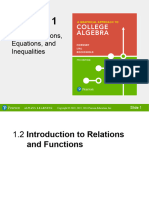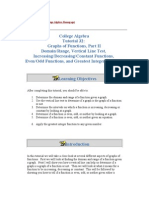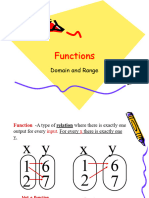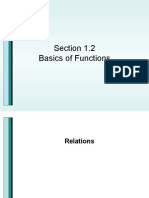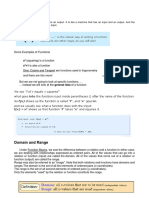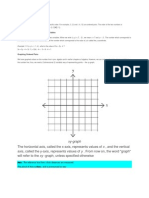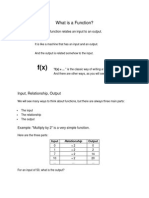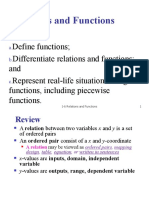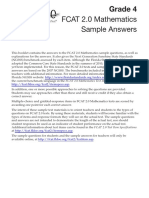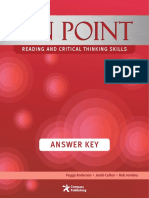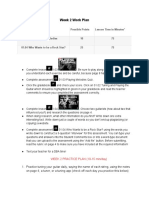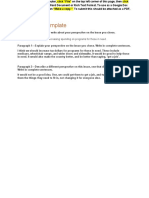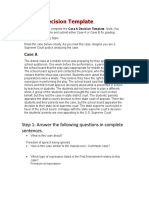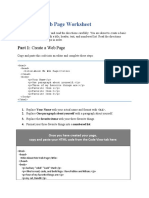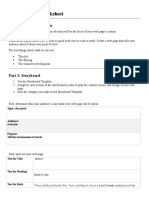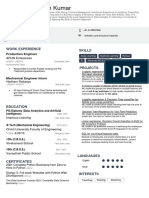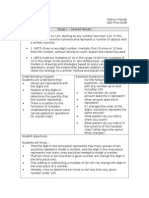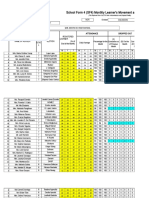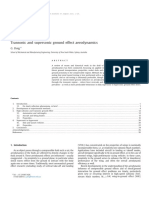0% found this document useful (0 votes)
248 views7 pages6.01 - Identifying Functions
This document provides information about identifying functions including vocabulary terms, finding the domain and range of relations and functions, determining if a relation is a function, describing intervals of change on graphs, and sketching graphs from real world descriptions. The document contains examples and practice problems with video links for each topic.
Uploaded by
Zachary StarkCopyright
© © All Rights Reserved
We take content rights seriously. If you suspect this is your content, claim it here.
Available Formats
Download as DOCX, PDF, TXT or read online on Scribd
0% found this document useful (0 votes)
248 views7 pages6.01 - Identifying Functions
This document provides information about identifying functions including vocabulary terms, finding the domain and range of relations and functions, determining if a relation is a function, describing intervals of change on graphs, and sketching graphs from real world descriptions. The document contains examples and practice problems with video links for each topic.
Uploaded by
Zachary StarkCopyright
© © All Rights Reserved
We take content rights seriously. If you suspect this is your content, claim it here.
Available Formats
Download as DOCX, PDF, TXT or read online on Scribd
/ 7
















